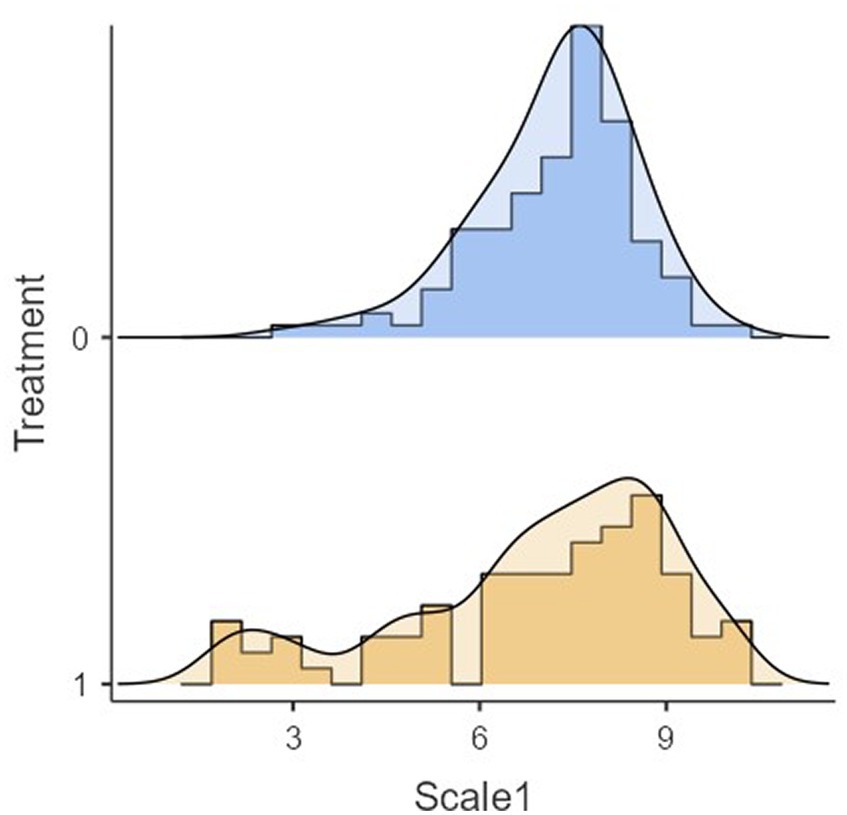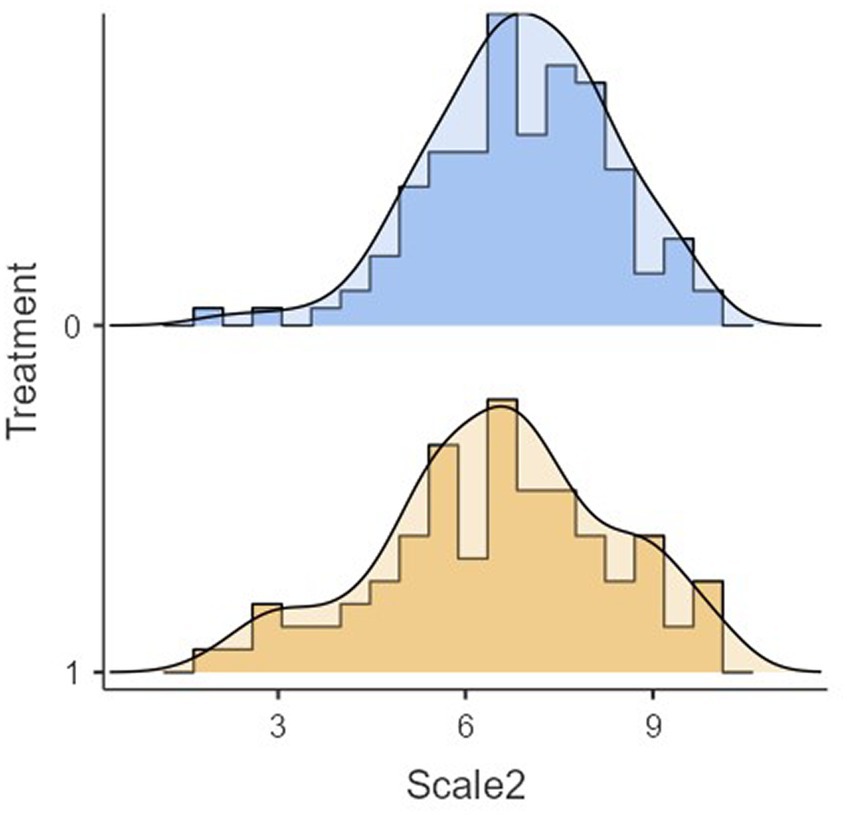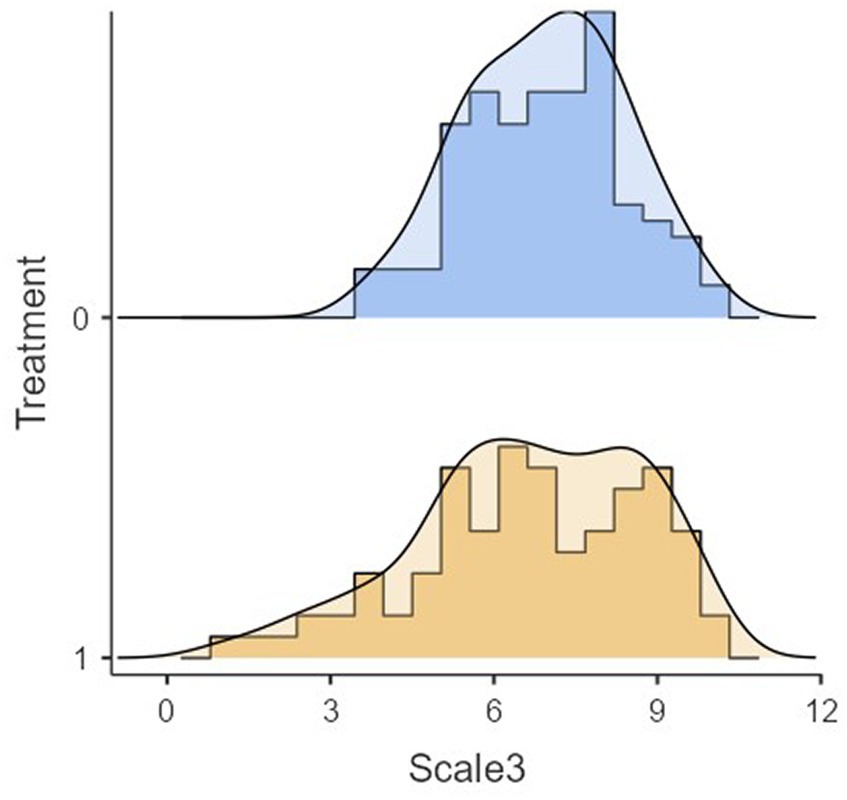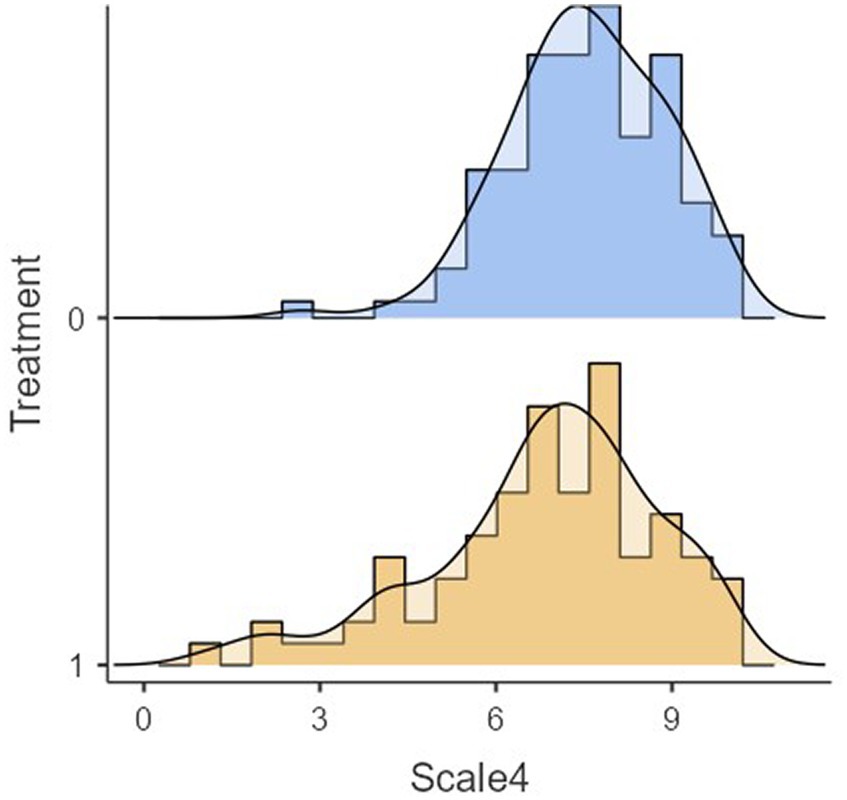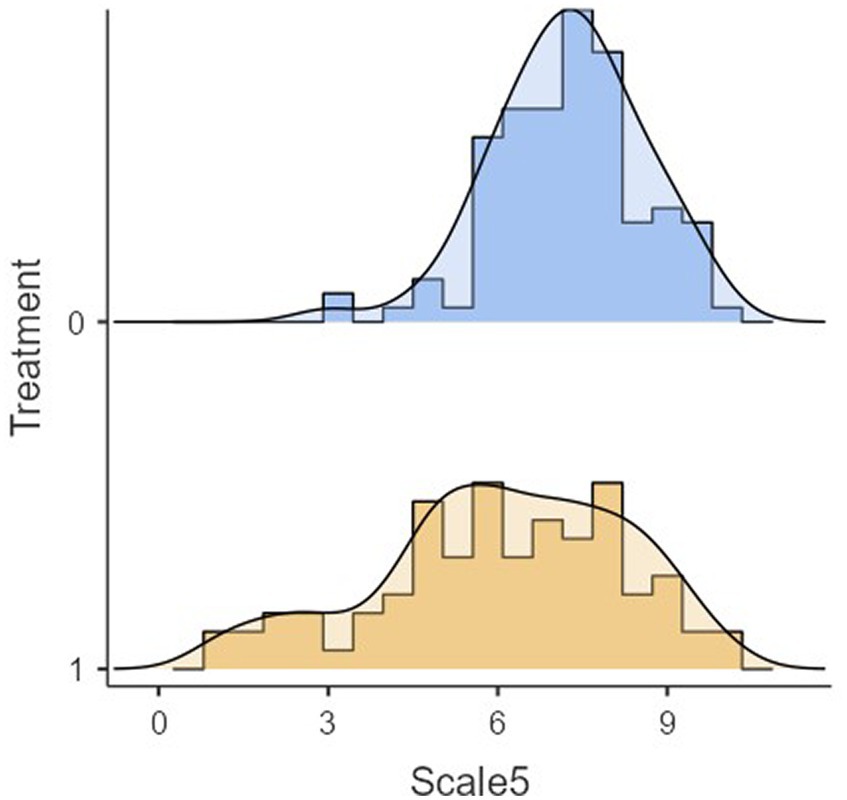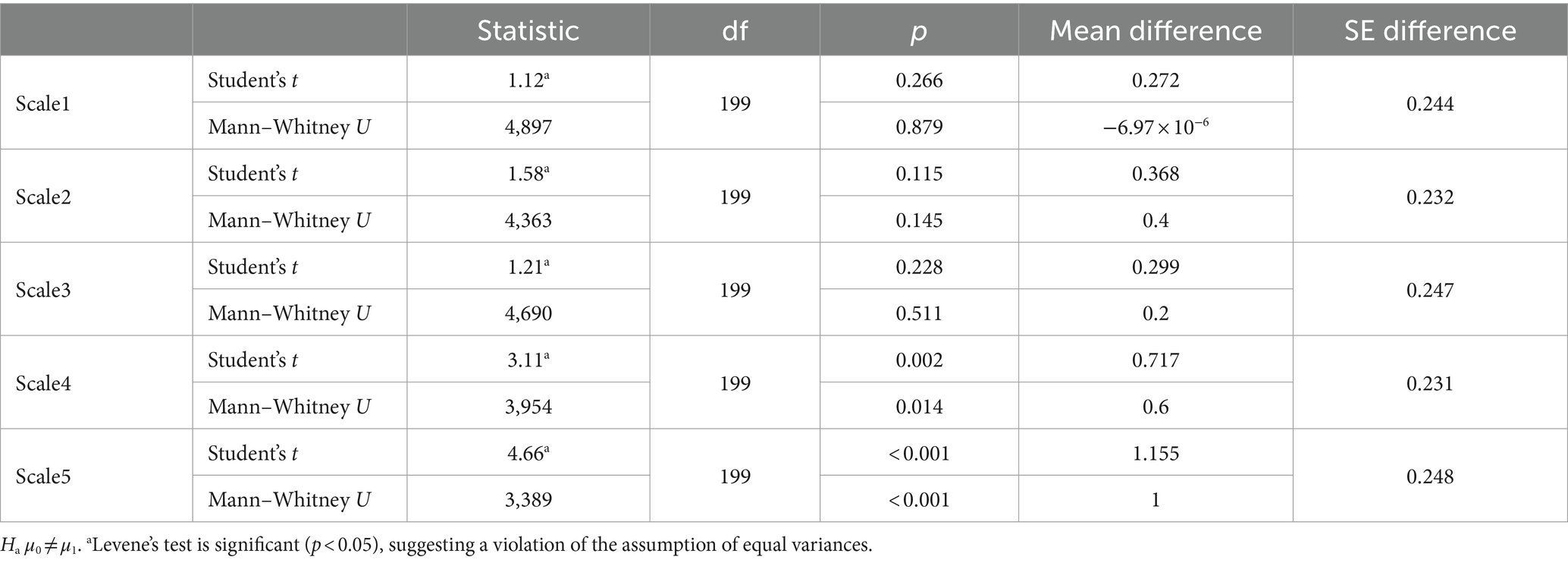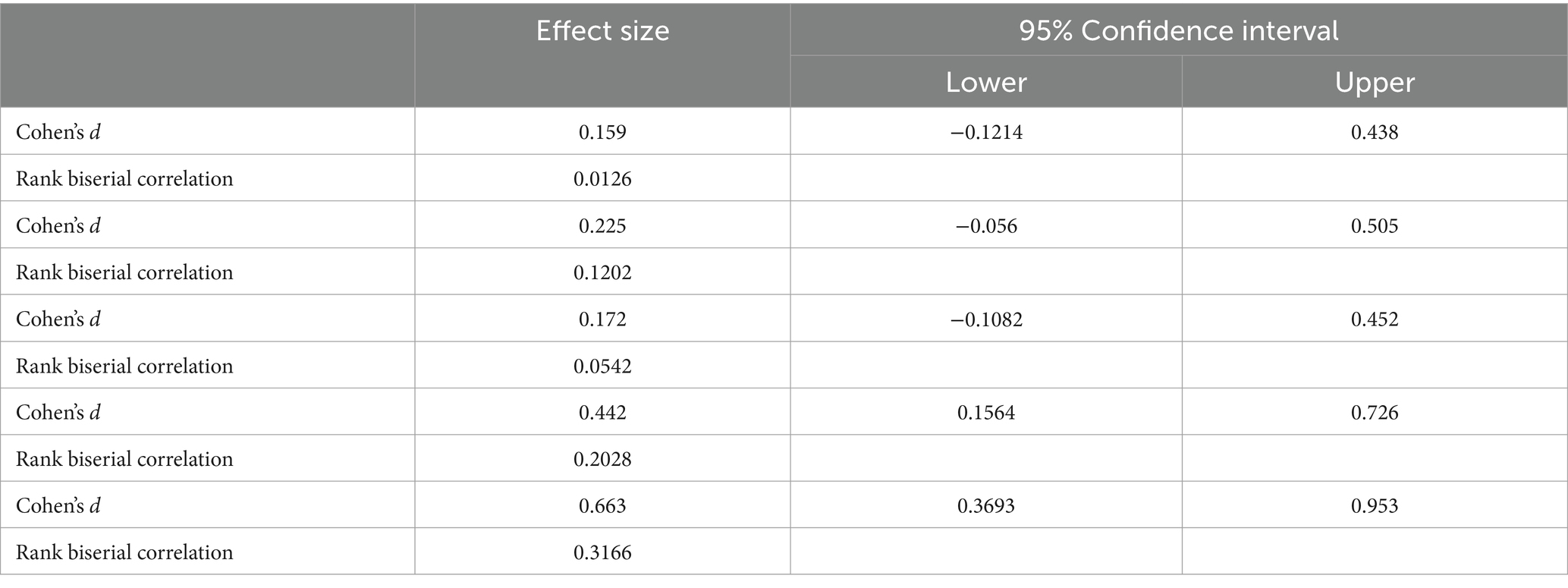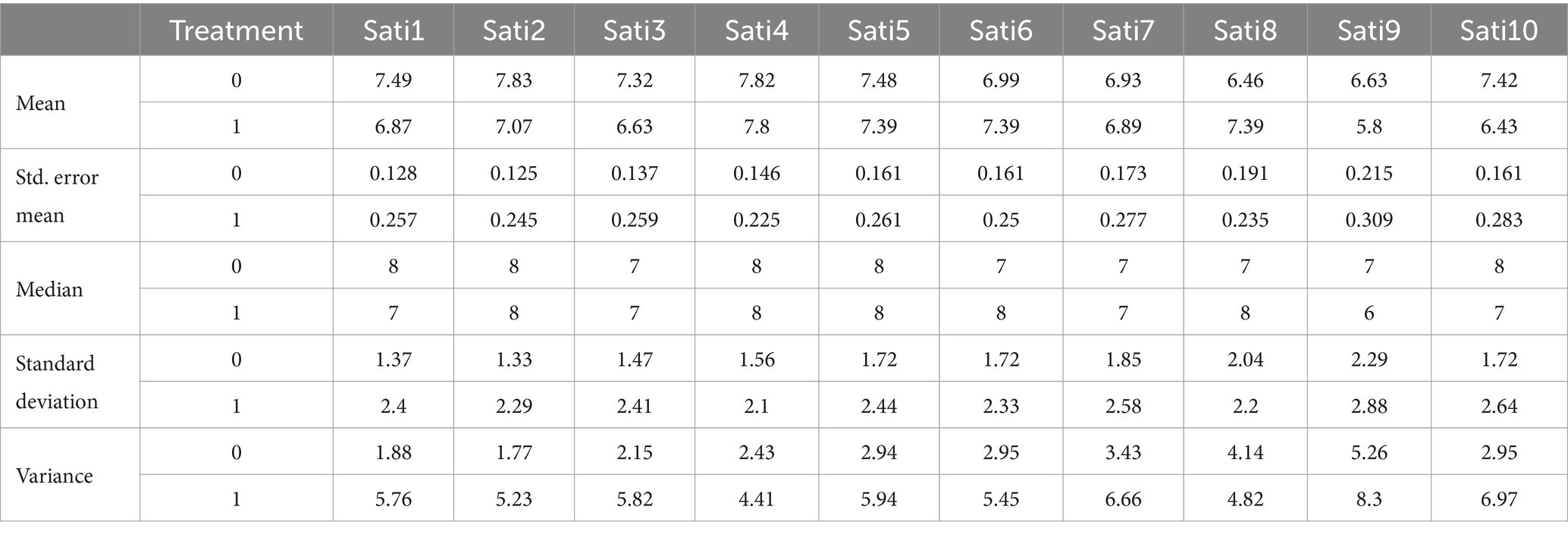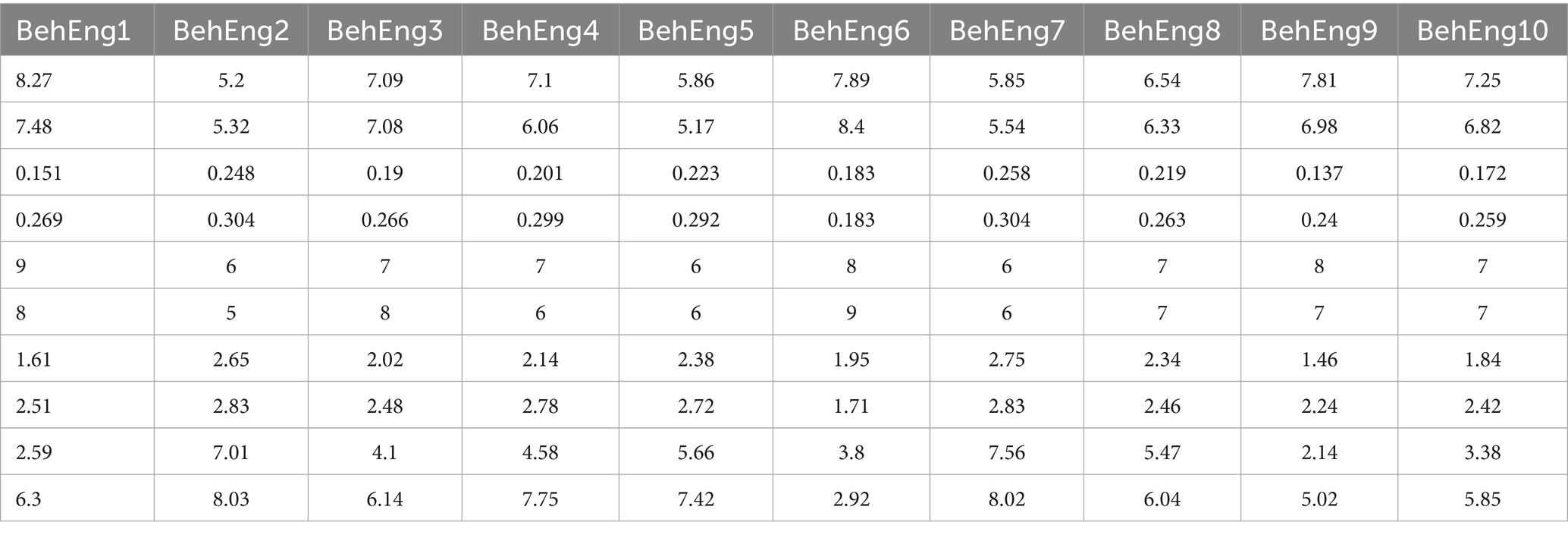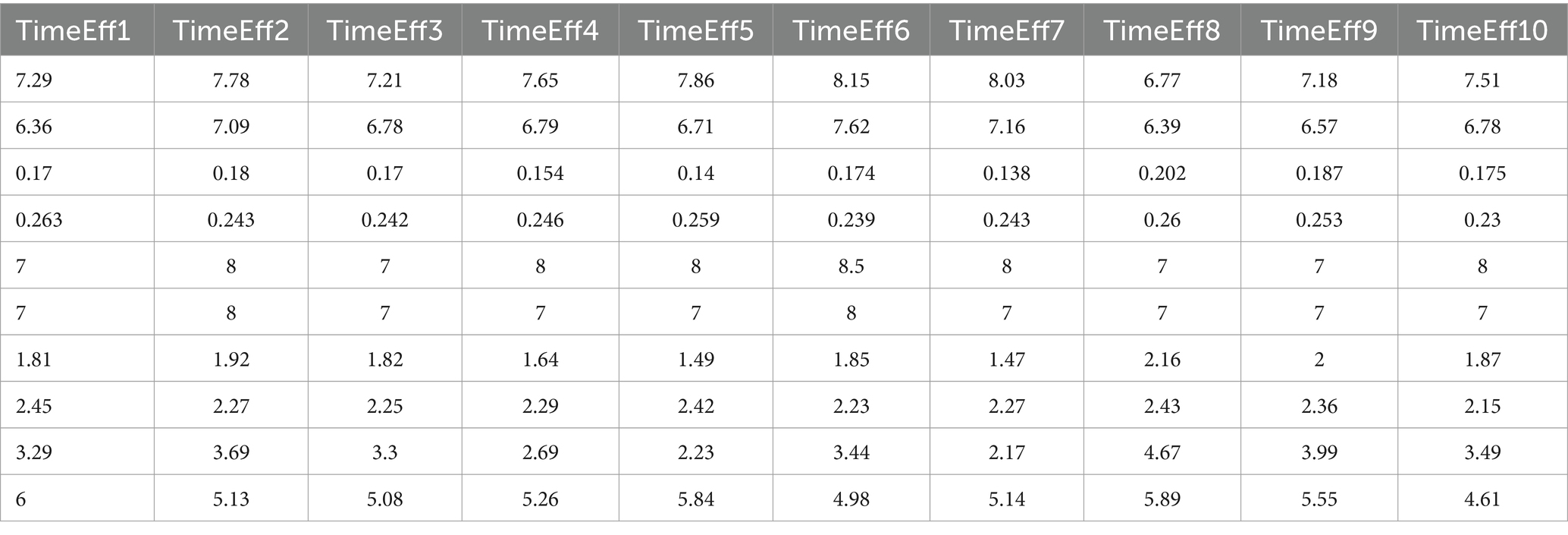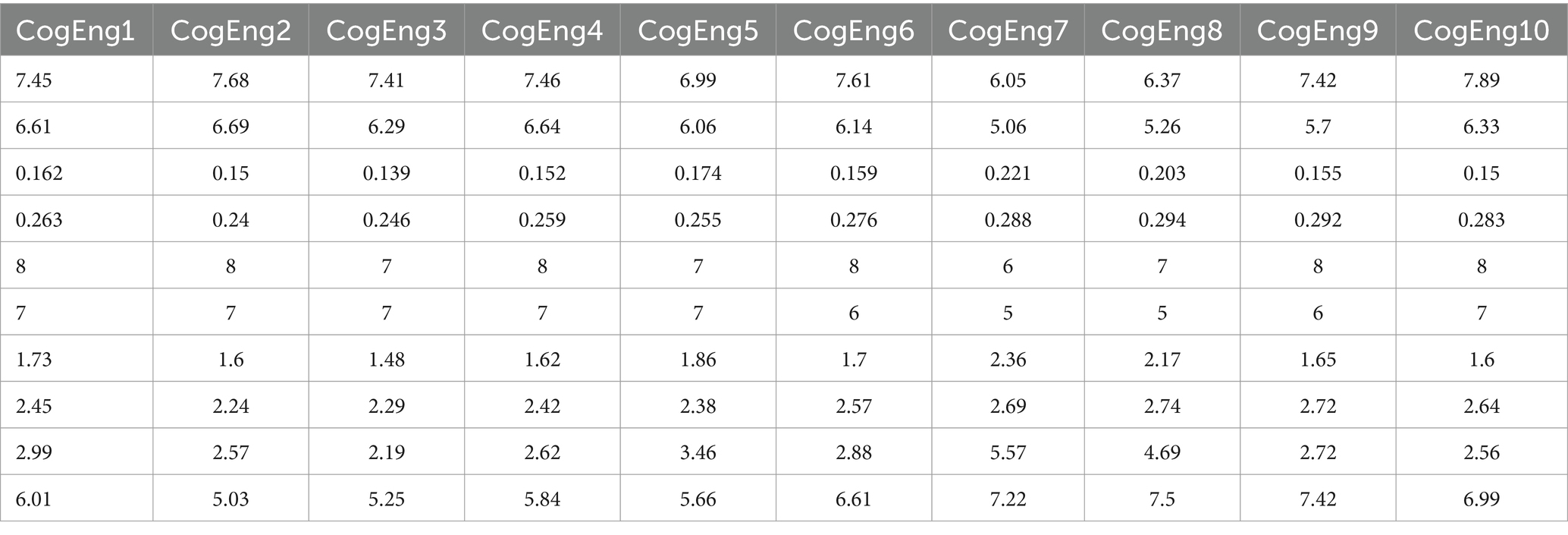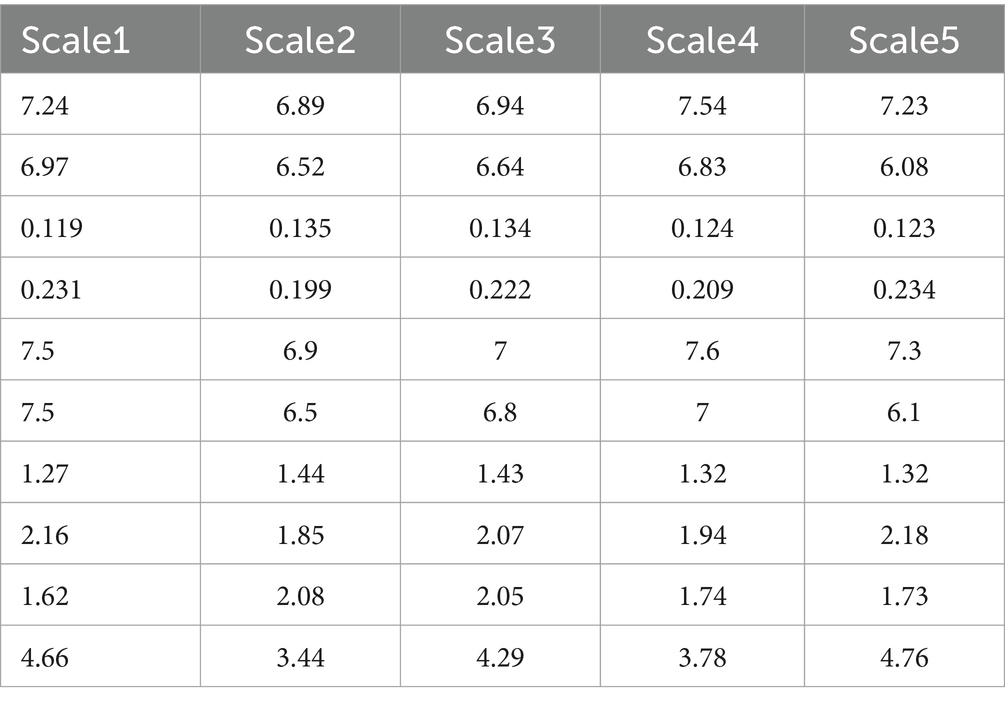- 1Game Science Research Center, IMT School for Advanced Studies, Lucca, Italy
- 2Game Science Research Center, University of Florence, Florence, Italy
- 3Game Science Research Center, University of Siena, Siena, Italy
The integration of games in education has garnered substantial interest. This study explores a game-based teaching system, a prototype megagame with RPG elements, within an economics course. Methodologically, we assessed the engagement of the course as a proxy for gauging the impact of the game on the learning process. The game involved 177 undergraduate students in thematic sessions, with 59 males and 118 females. Of these, only 114 filled out the pre-test, and 86 filled out the post-test, showing a dropout rate of 25%. The range of the age was between 19 and 21 years. We propose an evaluative framework through pre-post surveys. The theoretical analysis underscores the immersive potential of RPGs in educational contexts, while the results show a decrease in cognitive engagement and an increase in some elements of emotional engagement in students’ perceptions, despite high starting expectations by students. Thus, this research highlights the need for a more effective use of gaming as an educational tool by identifying and addressing these shortfalls through further studies, and for the subsequent broader implementation of GBL techniques.
Introduction
The application of games as teaching tools in university-level classes has a long and proven history. From the 1950s simulation games organized by Harold Guertzkow at Northwestern University (the “Inter-National Simulation”), fields such as international relations have been at the forefront of such history.
The discipline involved is GBL, or game-based learning, which explores the educational applications of games and their potential as learning tools (Nesti, 2017). It represents a growing frontier in education (Ucus, 2015; Qian and Clark, 2016; Barz et al., 2023), encompassing both digital and analog approaches (Sousa et al., 2023).
One of the key features of GBL is its ability to enhance enjoyment and intrinsic motivation in the learning process, enabling a deep understanding of subjects, even complex ones (Plass et al., 2015). To fully utilize these engagement characteristics, it’s essential to create gaming environments that promote learning and motivation effectively (Erhel and Jamet, 2013).
The practice of game-based learning (GBL) is often linked to the potential for skill development and training (Qian and Clark, 2016), making it a valuable tool in contemporary education. The cognitive load associated with game-based learning techniques is significant, with studies indicating that the relevant cognitive load exceeds that of traditional learning methods (Chang et al., 2017). Games can immerse students in a state of flow, characterized by heightened challenge and skill, fostering engagement and creating a specific cognitive state conducive to learning. Particularly in challenging environments, student learning is significantly enhanced (Hamari et al., 2016), and well-structured GBL can motivate students to improve their abilities by tackling increasingly difficult challenges.
In addition to enhancing cognitive abilities such as working memory and problem-solving, games can also cultivate relational and ethical skills through collaborative experiences. Consequently, gaming becomes a crucial tool for promoting cooperative learning. Moreover, games can aid in evaluating children’s visuo-motor skills (Perochon et al., 2023), serving not only as a tool for skill development but also as a means of clinical assessment.
Recent studies emphasize how GBL may be used to teach computational thinking (CT), considered a fundamental skill for individuals in the 21st century. A recent review by Wang et al. (2023) focuses on 39 studies included in the review, suggesting that GBL has positive effects on CT. However, the review indicates non-significant effects on certain CT elements (e.g., conditions, triggers, and abstraction) due to limited time for learning these elements and students’ preferences for using CT elements.
Even though it primarily concerns computer science education, it becomes evident from research in the GBL field that there is no standardized game or methodology for creating educational games (Videnovik et al., 2023). A specific game must be designed for each particular problem, a concept that can be extended beyond the digital domain. What appears distinctive is the game-based approach utilizing learning by playing to achieve specific educational objectives. Moreover, approaches involving emotional design can enhance the educational value of a game-based learning environment by boosting the interest and situational self-efficacy of players (Koskinen et al., 2023).
GBL can also be applied to adults or young adults, as indicated by numerous studies (Chen et al., 2023; Emerson et al., 2023; Maratou et al., 2023) in various educational domains, including medical education (Xu et al., 2023). A recent review (Dahalan et al., 2023) particularly highlights how gamification and game-based learning can improve academic performance, engagement, and motivation in professional education.
Concerning the field of economics, the application of games has often, and quite naturally, been linked with the question of whether economics could, in fact, become an experimental science (Holt, 1999). Experiments carried in the United States by Chamberlin, Smith, and others in the first two decades after World War II, have already solidly documented how the use of games, sometimes taken directly from the field of game theory, at least during the first decades of implementation of this teaching method, can be a useful and effective tool in introducing student-players to some concepts of economic theory.
The use of games in teaching economics at a university level is, thus, well-established (Kagel and Roth, 1995; Holt, 1999). While the first experiments in the field mainly employed games derived more or less directly from game theory, during the subsequent decades other games have been used for teaching and researching concepts related to microeconomics—e.g. actors’ interactions inside a specified market environment (Holt, 1999).
As mentioned above, experimental results have proven that these games are indeed effective in teaching concepts such as market arbitration, or market structures, or price settings under specific circumstances (just to mention a few of them).
However, those same experiments do not tell us anything about the opportunity of using games to teach more elaborate elements of economics, namely aspects of political economy. In order to know more about this specific application, it is possible to look at more recent developments, both in the wider field of the application of game-based education systems, and in the literature about it. Elizabeth Bartels concisely but efficaciously stated that the efficacy of games as teaching and learning tools stems from two elements: the fact that they “are models that players can relate to directly,” able to explain phenomena, and also to “manifest that explanation through compelling stories and experiences students can interact with directly”; and games’ immersiveness, “allowing limited replication of emotional and psychological experiences” (Bartels, 2014).
Bartels (2014) described how educational games, in order to be effective in their purpose, should comprise some key elements:
• Objectives for the game itself: in other words, what is expected people will learn from it?
• Environment: the scenario.
• Players and roles: who will play, and who will they interpret by playing the game.
• Rules.
• Analysis and assessment: what did people learn and, more importantly, what was the impact the game had on their learning?
These are the result of a re-framing of previous intuitions from scholars in the field, who identified four key components for innovative and interactive educational tools: educational objectives, design parameters, procedures, assessment, and debriefing (Lantis et al., 2000; Hertel and Millis, 2002).
The goals of games like these are particularly relevant to the so-called “Megagames.” Megagames are designed for a substantial number of players, ranging from 30 to 300 or more. This characteristic makes megagames particularly apt for class teaching. For example, experiments in this sense have been carried out with the climate change megagame, led by a group from Linköping University with the aim of studying citizens’ reactions to (but also potential elaboration of) adaptation strategies to climate change (Uhrqvist et al., 2021). Another example is the Alliance megagame, a geopolitical simulation in which players, divided into teams, are asked to take on the government of a country (in theory fictional, but clearly and explicitly inspired by real-world states).
Megagames are usually designed as tabletop games, with a structured ruleset aimed at enhancing players’ involvement, together with their ability to effectively play and master the game. For example, Alliance includes a global map, sheets for all players’ groups, and counters.
Almost inevitably, megagames also includes elements of roleplay. Players are often asked to almost literally impersonate specific stakeholders as requested by the setting. Depending on the context, players can take on the mantle of a prime minister, a member of the cabinet, a private citizen, and so on. Of course, each ruleset determines the weight of role-playing in a specific game. In the cases in which it is implemented, role-playing should not be considered to be simply an “ornament,” a secondary element of a game that could, otherwise, work perfectly without it as well. Quite the contrary. Games such as alliance, or the climate change megagame, put role-playing at the forefront of the players’ experience. Interpreting the role of specific stakeholders implies a change in the players’ own payoff matrix, a modification of their rational calculus and, consequently, it directly and radically alters the strategies available to them. In turn, the importance of the role-playing element has been emphasized by scholars as also effectively contributing to both students’ involvement and active learning process (van der Meulen Rodgers, 1996; Oberhofer, 1999). Megagames have proved to be useful tools to be implemented into an academic framework due to a number of reasons: chiefly, the possibility to accommodate a larger number of students, compared to other game typologies; the need for few umpires; the possibility to implement a game engine that makes transparent the use of, and reference to, specific elements of economic theories and models. This latter point, in particular, gives the megagame typology a potentially significant advantage for GBL purposes, only shared (with due differences that it is impossible to list here) with the matrix game typology.
This brief overview paves the way for two considerations.
The first is that existing literature on megagames is slim at best, but when moving to simulation, gaming, and, more specifically, role-playing games applied to the teaching of university-level economics the situation improves. The second, related to the first, is that the connection between the use of megagames, role-playing components, and the learning of economics by student-players is not yet very well explored.
These two considerations, in turn, provided the basis for the experiment which will be illustrated in this paper. Here our purpose will be to sketch the structure of the game designed for an undergraduate course in Political Economics at the University of Florence. After describing the main features of the game, including the tools used for collecting data on the game’s efficacy and effectiveness, we will propose a preliminary interpretation of the data collected, together with a series of possible conclusions that may be drawn from them, including ways of refining future new iterations of the game itself.
Materials and methods
Sample
The student sample consisted of 59 males and 118 females. Of these, only 114 filled out the pre-test, and 86 filled out the post-test, showing a dropout rate of 25%. The range of the age was between 19 and 21 years, coherently with a first-year course of university in Florence. For every “country” group there were from 7 to 10 students.
The educational megagame
The main goal was to create a role-playing megagame for first-year undergraduate students attending the political economy course at the University of Florence, Italy. The game’s purpose was to make students experience the effects of economic policies enacted by states with diverse, but interconnected, economies, in the meanwhile enhancing their learning and understanding process. In other words, the game was designed to be a complement of more traditional frontal lessons, and it was conceived as a sort of evolution of the “International Trade Game” already described by Sloman (2002).
The activity took place over six sessions, each lasting 2 h, with a variable number of students and attendance was not mandatory. The number of participants varied because progressively fewer students participated in each session. On the first day, there were 160 participants while the number of people who filled out the pre-treatment questionnaire was 114. The people who filled it out post-treatment were 86. The sessions occurred between February 21, 2023, and May 16, 2023, with 2 weeks of intervals between each session, during which students could attend traditional lectures on political economy. The game activity was part of the political economy course of the Bachelor Degree Course in Sustainable Development, Cooperation and Conflict Management (SECI) at the University of Florence. One of the researchers of this paper was the professor in charge of the course. The class was divided into 20 groups, each consisting of six to ten students. Each group represented a state in the imaginary continent of Turania, to which a twenty-first state controlled by the organizers of the game was added. Each state had specific features such as a flag, a list of energy sources, and specializations. Each group was free to choose their state’s name and highest authorities.
Our game model attempted to follow Bartels’ framework, with some added specificities, strictly linked with the end goal, most of them connected to the process of scenario creation in particular:
1. Players had to play in teams: this was due to the high number of students involved. Also, team playing offered the opportunity for negotiation processes among the different team components and their own values and interests.
2. The game scenario should be fictional, but it should recall the current situation in Europe: a single continent, with multiple, interconnected economies and some form of coordination mechanism between states.
3. The scenario should provide for asymmetries in the states’ economies: GDP, public debt, weight of different economic sectors, distribution of energy sources, demographics, are all elements contributing to the players’ perception of a diverse continent, with differences in what each actor could (and is willing to) achieve.
4. Finally, one key requirement was simplicity of use: since the game was designed to be a complement for frontal-learning classes, it had to be simple enough to be accommodated in the course schedule without too much disruption.
These four requirements led in turn to the elaboration of the following framework:
• The map of a fictional continent (called Turania) was drawn, with 21 states on it.
• The starting scenario provided for all states in Turania being members of the Turanian Economic Union (Unione Economica Turaniana, or UET), an organization working as a simplified version of the European Union: unified market, a single assembly taking mandatory decisions for all member states through a consensus mechanism, a de facto unified fiscal policy (this was not explicitly provided for in the first briefing, but players’ behaviors and decisions determined its implicit existence).
• Starting conditions were set as follows:
economic unification of the continent is progressing, however enhancing disparities among member states;
a neighboring continent (called Secezia) has increased tariffs against Turanian enterprises, generating a crisis for those that are more export-oriented;
climate change effects are increasing over the whole continent, generating adverse conditions for all states.
Once divided into teams (each representing the government of a Turanian state, chosen by the players themselves from the list provided to them), players would be briefed on the scenario and then asked to prepare for a first meeting of the UET Assembly, where proposals would be voted to address the above-mentioned challenges. Thus all subsequent sessions would represent meetings of the UET Assembly, each facing the consequences (intended and unintended) resulting from the decisions approved and implemented during the previous meeting.
During each session (again, except for the first one dedicated only to preparing and explaining the game), students were shown the modified scenario, with a focus on those regional problems related to topics in political economy, particularly macroeconomics. Preparation for each session required an hour, during which teams deliberated proposals for their respective states. Following this, the assembly took place, with a single representative from each team, and a 30 min timer to reach a consensus decision. These decisions were then processed by the organizers/umpires, who explained their effects in the subsequent session. This approach to “arbitration,” determining the outcomes of players’ decisions, differed from the structured methods typical of megagames or most role-playing games.
In the final session, two representatives from each group convened in a plenary assembly where they had to find a common solution for the fate of the continent of Turania, building upon the decisions made during the previous sessions.
The primary objective was to ensure players understood the motives and mechanisms behind their results, recognizing their influence, while also empowering them to make meaningful, informed decisions. This approach also emphasized the substantial role unintended consequences played in the enactment and subsequent outcomes of economic policies.
The game unfolded over five sessions, and after its conclusion, data were gathered from players through a structured questionnaire consisting of five different topics.
Survey
As part of the assessment process, students were also preliminarily asked to answer a questionnaire prior to the beginning of the game. The questionnaire was made of 50 questions related to the course engagement (Gurcan et al., 2023), and not directly on the game. The questionnaire is based on these five scales, extracted by a series of different surveys to better match our needs. After the extraction of the items, we reframed them in order to make a pre-version and post-version in Italian language compatible with the necessity of the evaluation. In particular, we selected and reframed only 10 items for each scale so as not to have a too-long questionnaire and five uniform dimensions. The structure of the items was uniform on a Likert scale at 10 points. The criteria for the selection of items was based on the characteristics of the course and the congruence to the indicators of every item. The internal consistency of the dimensions was checked and found to be satisfactory through a correlation matrix (correlations between 0.5 and 0.7). Further investigations would be necessary for the complete validation of this questionnaire despite the extraction of the items from validated sources, as summarized here and in the Appendix.
• Course satisfaction (scale 1): this assesses students’ overall contentment with the course, including aspects like course materials, instruction, and assessment methods. This scale was extracted partially from the institutional survey of the University of Florence on course satisfaction and from the NSS (National Student Survey) (Lenton, 2015; Rahmatpour et al., 2019).
• Behavioral engagement (scale 2): this looks at the extent to which students participate in course activities, such as attending lectures, completing assignments, and actively participating in class discussions (Lam et al., 2014; Hollister et al., 2022).
• Emotional engagement (scale 3): this evaluates the emotional investment of students in the learning process. It includes feelings of interest, enjoyment, and enthusiasm for the subject matter. Some specific scales like the “Utrecht Work Engagement Scale” (Mills et al., 2012) or the “Academic Emotions Questionnaire” measure emotional engagement (Manwaring, 2017).
• Time effort (scale 4): this refers to the amount of time and effort students invest in the course, both in and outside of class. It assesses the workload and dedication required (Hailikari et al., 2021).
• Cognitive engagement (scale 5): this focuses on the depth of learning and intellectual effort students apply to course content. It includes critical thinking, problem-solving, and active participation in discussions (Schaufeli and Bakker, 2010; Manwaring, 2017).
Each scale is the result of an extraction or radical modification of 10 items from existing scales in the literature on the topic of engagement (Schaufeli et al., 2006; Alrashidi et al., 2016; Mamemli and Passini, 2017; Zhoc et al., 2019; Assunção et al., 2020). If we consider these as five dimensions, from the literature we take only items with constraints of numerosity (10 items max for every dimension) and congruence to the definition and the theme of games. To differentiate between pre-test and post-test, in the first case, the items were on the previous courses in which students were involved, in the second case it was referred to the course in which they played the megagame. Then, with the same questions as a basis, we can compare results based on differences in engagement from current and previous courses. For more details on the extraction of items from the scales, you can see the Appendix in which we show the connection to the literature of every item.
To evaluate the effect of a pre-post treatment on the same group of people, a hypothesis test known as the paired t-test can be used. This test is a statistical procedure used to compare differences between pre-treatment and post-treatment measurements within the same group of subjects. This test is particularly useful when you want to determine whether the treatment had a significant effect on the participants by detecting changes before and after applying the treatment. The problem with using this type of test is that we would have lost some data due to the discrepancy in the sample size between pre-test and post-test. Therefore, if the number of respondents in the post-test is significantly lower than in the pre-test (from 114 to 86 respondents out of the total of 177 participants in the experiment) then the Mann–Whitney test is a more appropriate choice than the paired t-test. The Mann–Whitney test is a nonparametric test that can be used to compare two independent groups when the data does not meet the assumptions of the parametric t-test, such as normality of the data or homogeneity of variances. This test compares the distribution of data rankings in the two groups and determines whether there is a significant difference between them (see Figures 1–5).
Results
By examining the survey results, it is possible to compare the various scales, both before and after, as well as among themselves.
As it can be seen in Table 1, the p-value of the last scales 4 and 5 is significant while scale 2 slightly exceeds the threshold of 0.05.
Table 2 is a continuation of the previous one and shows the size of the effect regarding the change in means. The interpretation of Cohen’s d can vary slightly depending on the context, but above the threshold of 0.2 a small effect size is considered, while above 0.5 a medium effect size.
From here on you can see five tables (Tables 3–7) with the descriptive statistics of the pre (identified by treatment 0) and post (identified by treatment 1) sample. The order of the values follows that of the first table except for the sample size which is present at the beginning only in the first (as it is always the same): mean, standard error, median, standard deviation, and variance. The tables are so numerous because they retrace the scales item by item and you can see the individual variations. The scales are in order as follows:
• Course satisfaction (Sati)
• Behavioral engagement (BehEng)
• Emotional engagement (EmoEng)
• Time and effort (TimeEff)
• Cognitive engagement (CogEng)
Each scale is the result of an extraction of 10 items from existing scales in the literature on the topic of engagement as already explained in materials and methods.
In these item-by-item tables, we can detail which elements of the game went better and which were worse. In particular, there is an expected increase in some items of emotional engagement while a general decrease in cognitive engagement. Simply by merging the scale the negative items counterbalanced the positive ones and by considering only the merged scales we would not have captured these differences.
In any case, the table below presents the differences as for the previous descriptive tables but with the overall scales (see Table 8).
Discussion
The findings show the potential of game-based teaching in the context of the political economy course of the University of Florence, when the goal is to complement more traditional approaches to teaching and learning. The combination of megagame with role-playing characteristics proved useful in enhancing students’ involvement and, consequently, their understanding of the subject.
They also show some issues, as looking at the tables presented above demonstrates.
To begin with, the average difference grows in the scales where a greater significance is detected and we can therefore detect an average reduction in cognitive engagement in students after playing the game. How can this phenomenon be explained? At the end of the course, qualitative feedback was requested and, as mentioned, some critical issues emerged. These issues were unavoidably related to the experimental and prototypical nature of the pilot. However, it should also be highlighted how the general level of motivation and engagement by the students of the SECI course was very high at the beginning, emphasizing then how the game tool is generally useful in contexts in which initial motivation is low. Therefore, highly motivated students (before the experiment) would have preferred a lecture as it is more dense in content than a game which requires more time to delve deeper into individual concepts. Another problem concerned expectations towards the game, since, when starting at very high expectation levels, it is difficult to maintain quality standards high enough for the students, an issue which will be addressed in subsequent iterations (see below the Conclusion section).
It is very interesting to see how a second curve was generated in the left tail of the following graphs between pre and post-treatment. Essentially the game had a polarising effect where a small group gave more negative responses shifting the entire rating. The problem persists for all five scales to varying degrees. For this reason, a variation can also be seen in the skewness and kurtosis index, without however violating the normality assumption.
The findings also pave the way for further considerations and for the possibility (and opportunity) for further research in the field.
First, it is difficult to assess the specific relevance of role-playing in the results compared to the game as a whole. In other words, it is still hard, if not impossible, to answer the question of whether role-playing is specifically suited for teaching economics compared to other typologies of games, and to what degree. However, this should not be seen as a limit intrinsic to the use of role-playing games. Quite the contrary. If anything, the findings shown here should stimulate the search for new methodologies specifically aimed at assessing the potential of role-playing games in the understanding of economics by undergraduate students, in conjunction with what is being done already in the field of international relations, for example.
The second point derives directly from the first. In order to stimulate further research in the field, the need for new experiments clearly shows up. These new experiments will, by necessity, require an enhanced game design. In turn, this will translate into a more structured framework, aimed at enhancing both the megagame component, and the role-playing one to better increase their effectiveness in the teaching-learning process and to make that same effectiveness actually as transparent as possible. Still keeping the field of international relations as a comparative stepstone (all the more fitting given also the game scenario illustrated in this paper), the work of Mark Boyer could be used as both a paradigm and a source of inspiration for future developments (see Boyer, 2000, for examples concerning the teaching of game concepts applied to IR).
Also, the relationship between the game and the course could be enhanced. Such a strengthened relationship between course and game contents would entail, as a matter of example (and in the case, it should be decided to keep the scenario used in this pilot), the introduction of non-State actors into the scenario, as actively playable (e.g., NGOs, lobbies, etc.…) in order to better mirror the multifaceted reality of international politics, and the multiple actors that actually shape international economic relationships.
Tied to the fundamental issue of a stricter relationship between course and game is the number of players. While megagames have shown, and continue to show, how it is possible to build meaningful game mechanics and rules to be played by a relatively high number of players, scholars involved in experimental economics have long recognized how smaller groups of students made the ideal context for game-based learning experiments (Holt, 1999). In the specific case of the course and game illustrated in this paper, infrastructural concerns (i.e., the size of classrooms compared to the number of students) did not allow for effective management of players, resulting in the need to spread them in two different classrooms. This sort of physical divide did impact the opportunities for inter-group interactions, also requiring further effort on the part of the overseers. This is another instance of the (unfortunately, quite widespread) issue of long-standing infrastructural constraints that Italian Universities suffer from, and which effectively limit students’ opportunities. A more effective application of GBL practices and experiments will require, if not a solution to such an issue, at least a circumvention of some sort.
Since the need for a smaller (or, at least, better distributed and managed) number of players is motivated by the need for personal players’ involvement in the game, another issue emerges to attention as being directly related to the need for a reiteration of the experiment. This is the need for a better and more nuanced and refined understanding of players’ attitudes and motivations towards involvement in game-based learning activities. In other words, an understanding of players (that is, in this case, university students) gaming culture (in the absence of agreed scholarly definitions, here meaning generically the relationship between actors and games).
One of the assumptions of this pilot has been that all players share the same level of commitment to, and a similar attitude towards, games and game-based learning. Of course, this is clearly an oversimplification, made necessary by the need to focus on those data more strictly related to the interaction between the game and the course activities and content. However, the authors are well aware of the fundamental importance a preliminary look at the gaming culture of those most directly involved in the activity, the students-players, may have in giving a further edge in understanding the data emerging from the experiment.
The issue of each player’s own gaming culture also paves the way for the need for players’ motivation to actually playing the game (and, more generally, to actively participate in the course and the learning process as a whole). The element of motivation has been long recognized as a fundamental pillar for successful GBL activities (Greenblatt, 1981; Theall and Franklin, 1999) and for simulations in the field of international relations (Lantis et al., 2000). However, the specificities of Italian university-level education, particularly concerning bachelor degrees, allow for much less flexibility than would be desirable in this case. The main issue in this sense is that students are often obliged to take certain courses, thus sometimes virtually excluding deep personal motivation in the pursuit of learning their specific contents. Of course, games here can gain an advantage compared to more traditional learning approaches.
Conclusion
All the elements highlighted in the previous section point to some of the intrinsic weaknesses of the experiment that had been carried, and described in this paper. Another issue to focus on concerns the interaction between high starting expectations by students and high motivation for learning (that is, before the implementation of a GBL tool), on one side, and game-based activities, on the other, as the latter will need to demonstrate their ability in sustaining students’ motivation over the long run. Such a goal may only be achieved through careful game design. These weaknesses, once duly identified, need to be properly addressed in order to reiterate the experiment in the search for more meaningful and in-depth results.
The experiment will be conducted again during the next academic year, with modifications and enhancements made to the megagame based on feedback received from students, and also on the considerations that have been brought forward here. In particular, one aspect that will need to be addressed is stronger attention to the interaction between players and the game (both concerning its mechanics and its scenario), and direct, on-site observations from lecturers and researchers employed as umpires during game sessions. The main hypothesis underlying the reiteration of the experiment will concern the strength of the relationship between student-players interaction with the game contents (and, consequently, the potential for learning) and their gaming culture. A secondary hypothesis to be verified will possibly concern the suitability of matrix games, compared to megagames, for achieving the game’s learning objectives.
Other elements to be taken into account in future reiterations of the experiment will be the need for a more detailed demographic analysis of the sample; the introduction of specifically-designed and structured tools for qualitative analysis (namely, focus groups); and improvements to questionnaire validation in order to better analyze and interpret feedback from students-players.
Furthermore, the collected data presented in this study will also be used to explore the possibility of implementing similar activities in other courses within the same degree program. Expanding the use of gaming in academic practices can benefit student learning and engagement in a course, while also helping them adapt to this innovative teaching approach, especially when well-organized, and significantly different from traditional frontal teaching methods. Game-based learning can aid in better understanding which questions to focus on, drawing directly from the contributions of the involved students.
Data availability statement
The original contributions presented in the study are included in the article/Supplementary material, further inquiries can be directed to the corresponding author.
Author contributions
AI: Conceptualization, Supervision, Writing – original draft, Writing – review & editing. MB: Conceptualization, Methodology, Project administration, Supervision, Writing – original draft, Writing – review & editing. AP: Conceptualization, Data curation, Formal analysis, Visualization, Writing – original draft.
Funding
The author(s) declare that no financial support was received for the research, authorship, and/or publication of this article.
Conflict of interest
The authors declare that the research was conducted in the absence of any commercial or financial relationships that could be construed as a potential conflict of interest.
Publisher’s note
All claims expressed in this article are solely those of the authors and do not necessarily represent those of their affiliated organizations, or those of the publisher, the editors and the reviewers. Any product that may be evaluated in this article, or claim that may be made by its manufacturer, is not guaranteed or endorsed by the publisher.
Supplementary material
The Supplementary material for this article can be found online at: https://www.frontiersin.org/articles/10.3389/feduc.2024.1330057/full#supplementary-material
References
Alrashidi, O., Phan, H. P., and Ngu, B. H. (2016). Academic engagement: an overview of its definitions, dimensions, and major conceptualisations. Intern. Edu. Stud. 9, 41–52.
Assunção, H., Lin, S.-W., Sit, P.-S., Cheung, K.-C., Harju-Luukkainen, H., Smith, T., et al. (2020). University student engagement inventory (USEI): transcultural validity evidence across four continents. Front. Psychol. 10:2796. doi: 10.3389/fpsyg.2019.02796
Barz, N., Benick, M., Dörrenbächer-Ulrich, L., and Perels, F. (2023). The effect of digital game-based learning interventions on cognitive, metacognitive, and affective-motivational learning outcomes in school: a meta-analysis. Rev. Educ. Res. 94, 193–227. doi: 10.3102/00346543231167795
Boyer, M. (2000). “Coalitions, Motives, and Payoffs: A Simulation of Mixed-Motive Negotiations,” in The New International Studies Classroom. Eds. Lantis, Kuzma, Boehrer. Active Teaching, Active Learning. Lynne Rienner Publishers. Boulder, Colorado. 95–110.
Chang, C. C., Liang, C., Chou, P. N., and Lin, G. Y. (2017). Is game-based learning better in flow experience and various types of cognitive load than non-game-based learning? Perspective from multimedia and media richness. Comput. Hum. Behav. 71, 218–227. doi: 10.1016/j.chb.2017.01.031
Chen, C. M., Ming-Chaun, L., and Kuo, C. P. (2023). A game-based learning system based on octalysis gamification framework to promote employees’ Japanese learning. Comput. Educ. 205:104899. doi: 10.1016/j.compedu.2023.104899
Dahalan, F., Alias, N., and Shaharom, M. S. N. (2023). Gamification and game based learning for vocational education and training: a systematic literature review. Educ. Inf. Technol. 29, 1279–1317. doi: 10.1007/s10639-022-11548-w
Emerson, A., Min, W., Azevedo, R., and Lester, J. (2023). Early prediction of student knowledge in game-based learning with distributed representations of assessment questions. Br. J. Educ. Technol. 54, 40–57. doi: 10.1111/bjet.13281
Erhel, S., and Jamet, E. (2013). Digital game-based learning: impact of instructions and feedback on motivation and learning effectiveness. Comput. Educ. 67, 156–167. doi: 10.1016/j.compedu.2013.02.019
Gurcan, F., Erdogdu, F., Cagiltay, N. E., and Cagiltay, K. (2023). Student engagement research trends of past 10 years: a machine learning-based analysis of 42,000 research articles. Educ. Inf. Technol. 28, 15067–15091. doi: 10.1007/s10639-023-11803-8
Hailikari, T., Katajavuori, N., and Asikainen, H. (2021). Understanding procrastination: a case of a study skills course. Soc. Psychol. Educ. 24, 589–606. doi: 10.1007/s11218-021-09621-2
Hamari, J., Shernoff, D. J., Rowe, E., Coller, B., Asbell-Clarke, J., and Edwards, T. (2016). Challenging games help students learn: an empirical study on engagement, flow and immersion in game-based learning. Comput. Hum. Behav. 54, 170–179. doi: 10.1016/j.chb.2015.07.045
Hertel, J. P., and Millis, B. J. (2002). Using simulations to promote learning in higher education: an introduction. New York: Stylus Publishing.
Hollister, B., Nair, P., Hill-Lindsay, S., and Chukoskie, L. (2022). Engagement in online learning: student attitudes and behavior during COVID-19. Front. Educ. 7:851019. doi: 10.3389/feduc.2022.851019
Holt, C. A. (1999). Teaching economics with classroom experiments: a symposium. South. Econ. J. 56, 603–610.
Kagel, J. H., and Roth, A. E. (1995). The handbook of experimental economics. Princeton: Princeton University Press.
Koskinen, A., McMullen, J., Ninaus, M., and Kiili, K. (2023). Does the emotional design of scaffolds enhance learning and motivational outcomes in game-based learning? J. Comput. Assist. Learn. 39, 77–93. doi: 10.1111/jcal.12728
Lam, S., Jimerson, S., Wong, B. P. H., Kikas, E., Shin, H., Veiga, F. H., et al. (2014). Understanding and measuring student engagement in school: the results of an international study from 12 countries. Sch. Psychol. Q. 29, 213–232. doi: 10.1037/spq0000057
Lantis, J. S., Kuzma, L. M., and Boehrer, J. (2000). “Active teaching and learning at a critical crossroad” in The new international studies classroom: active teaching, active learning (Boulder, Colorado: Lynne Rienner Publishers).
Lenton, P. (2015). Determining student satisfaction: an economic analysis of the National Student Survey. Econ. Educ. Rev. 47, 118–127. doi: 10.1016/j.econedurev.2015.05.001
Mamemli, C., and Passini, S. (2017). Measuring four-dimensional engagement in school: a validation of the student engagement scale and of the agentic engagement scale. TPM Test. Psychom. Methodol. Appl. Psychol. 24, 527–542.
Manwaring, K. C. (2017). “Emotional and cognitive engagement in higher education classrooms” in Ph.D. Thesis (Utah: Brigham Young University)
Maratou, V., Ennami, F., Luz, F., Abdullahi, Y., Medeišiene, R. A., Šciukauske, I., et al. (2023). Game-based learning in higher education using analogue games. Int. J. Film Media Arts 8, 63–83. doi: 10.24140/ijfma.v8.n1.04
Mills, M. J., Culbertson, S. S., and Fullagar, C. J. (2012). Conceptualizing and measuring engagement: an analysis of the Utrecht work engagement scale. J. Happiness Stud. 13, 519–545. doi: 10.1007/s10902-011-9277-3
Oberhofer, T. (1999). Role playing in the history of economic thought. J. Econ. Educ. 30, 112–118. doi: 10.1080/00220489909595947
Perochon, S., Matias Di Martino, J., Carpenter, K. L. H., Compton, S., Davis, N., Espinosa, S., et al. (2023). A tablet-based game for the assessment of visual motor skills in autistic children. npj Digit. Med. 6:17. doi: 10.1038/s41746-023-00762-6
Plass, J. L., Homer, B. D., and Kinzer, C. K. (2015). Foundations of game-based learning. Educ. Psychol. 50, 258–283. doi: 10.1080/00461520.2015.1122533
Qian, M., and Clark, K. R. (2016). Game-based learning and 21st century skills: a review of recent research. Comput. Hum. Behav. 63, 50–58. doi: 10.1016/j.chb.2016.05.023
Rahmatpour, P., Sharif Nia, H., and Peyrovi, H. (2019). Evaluation of psychometric properties of scales measuring student academic satisfaction: a systematic review. J. Educ. Health Promot. 31:256. doi: 10.4103/jehp.jehp_466_19
Schaufeli, W. B., and Bakker, A. B. (2010). “Defining and measuring work engagement: bringing clarity to the concept” in Work engagement: a handbook of essential theory and research. eds. A. B. Bakker and M. P. Leiter (Hove, East Sussex: Psychology Press), 10–24.
Schaufeli, W. B., Bakker, A. B., and Salanova, M. (2006). The measurement of work engagement with a short questionnaire: a cross-national study. Educ. Psychol. Meas. 66, 701–716. doi: 10.1177/0013164405282471
Sloman, S. A. (2002). “Two systems of reasoning,” In Heuristics and biases: The psychology of intuitive judgment. Eds. T. Gilovich, D. Griffin, and D. Kahneman. Cambridge University Press. 379–396.
Sousa, C., Rye, S., Sousa, M., Torres, P. J., Perim, C., Mansuklal, S. A., et al. (2023). Playing at the school table: systematic literature review of board, tabletop, and other analog game-based learning approaches. Front. Psychol. 14:1160591. doi: 10.3389/fpsyg.2023.1160591
Theall, M., and Franklin, J. (1999). What have we learned? A synthesis and some guidelines for effective motivation in higher education New Direct. Teach. Learn. 78, 97–109.
Ucus, S. (2015). Elementary school teachers’ views on game-based learning as a teaching method. Procedia Soc. Behav. Sci. 186, 401–409. doi: 10.1016/j.sbspro.2015.04.216
Uhrqvist, O., Leifler, O., and Persson, M. (2021). Citizens’ views on climate change adaptation. A study of the views of participants in the 2020 Climate Change Megagame. Linköping University.
van der Meulen Rodgers, Y. (1996). A role-playing exercise for development and international economics courses. J. Econ. Educ. 27, 217–223. doi: 10.1080/00220485.1996.10844910
Videnovik, M., Vold, T., Kiønig, L., Madevska Bogdanova, A., and Trajkovik, V. (2023). Game-based learning in computer science education: a scoping literature review. Int. J. STEM Educ. 10:54. doi: 10.1186/s40594-023-00447-2
Wang, X., Cheng, M., and Li, X. (2023). Teaching and learning computational thinking through game-based learning: a systematic review. J. Educ. Comput. Res. 61, 1505–1536. doi: 10.1177/07356331231180951
Xu, M., Luo, Y., Zhang, Y., Xia, R., Qian, H., and Zou, X. (2023). Game-based learning in medical education. Front. Public Health 11:1113682. doi: 10.3389/fpubh.2023.1113682
Keywords: game-base learning, simulation game playing, gaming [education], game design, student—centered learning, game science
Citation: Iannace AM, Bisanti M and Piazzoli A (2024) Evaluating game-based teaching systems in economics courses. Front. Educ. 9:1330057. doi: 10.3389/feduc.2024.1330057
Edited by:
Manpreet Kaur Bagga, Partap College of Education, IndiaReviewed by:
Raffaele Di Fuccio, Pegaso University, ItalyLiliana Silva, University of Messina, Italy
Copyright © 2024 Iannace, Bisanti and Piazzoli. This is an open-access article distributed under the terms of the Creative Commons Attribution License (CC BY). The use, distribution or reproduction in other forums is permitted, provided the original author(s) and the copyright owner(s) are credited and that the original publication in this journal is cited, in accordance with accepted academic practice. No use, distribution or reproduction is permitted which does not comply with these terms.
*Correspondence: Arturo Mariano Iannace, YXJ0dXJvLmlhbm5hY2VAaW10bHVjY2EuaXQ=
 Arturo Mariano Iannace
Arturo Mariano Iannace Matteo Bisanti
Matteo Bisanti Andrea Piazzoli
Andrea Piazzoli